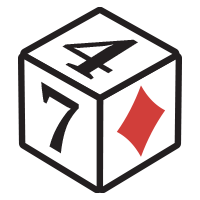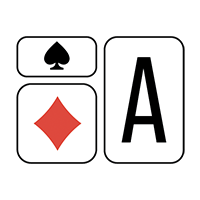Nick Petrangelo: What’s up, guys? It’s Nick Petrangelo and Daniel Dvoress here for GTO Lab, and we’ve got another hand history review coming up to illustrate one of the biggest mistakes I see regulars make all the time at final tables in high-pressure spots. The most important thing we want to get across in this video is to take whatever strategy you think you want to play for chips, polarize it a little bit, but most importantly, play smaller sizes.
Dan, let’s set the scene for this one. It’s a $200k final table in Montenegro, and there are some unique things happening in the preflop setup. Take us through the preflop details.
Daniel Dvoress: Sure. Things to know here: we’ve got about 150 big blinds in play with six players left, so the average stack is about 25 big blinds. The stack distribution is pretty unique. We have between five and ten big blinds in the small blind, big blind, and under the gun, who has folded. Then, approximately 40 to 50 big blinds for the hijack, cutoff, and button.
Michael Watson is opening into two covering stacks but faces the risk of getting called off by the blinds.
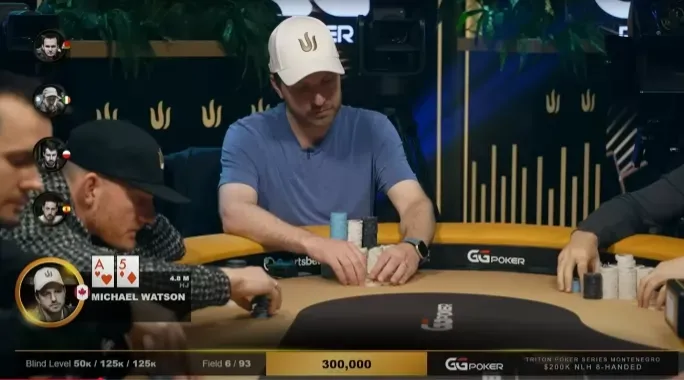
He’s going to be opening about 30% of hands here, high card heavy and pretty loose. He’s going to open off-suit aces, pocket pairs, and a wide range. Let’s see what happens in the hand.
NP: We think Michael Watson is going to open a range that’s not as tight as people might expect. Even with short stacks around the table, the chip leader still gets to use high cards and open pocket threes, and just call off against a 7 big blind stack. With that said, Wiktor Malinowski covers him on the button, not by a huge margin, but there is a lot of pressure on Mike because of those micro stacks.
What does that mean for Victor on the button?

DD: It means he gets to play very loose preflop but doesn’t get to three-bet all that much. He covers Mike, but his risk premium against Mike is extremely high. So, he’s going to have a very wide VPIP but a narrow value threshold—something like jacks plus ace-king. He’ll end up flatting maybe 20 to 25% of hands, which means some unintuitive flats for some players, like suited kings, suited connectors, every pair, and ace-eight offsuit. He’s taking advantage of the fact that Mike will have to check a lot of boards out of position and play small pots because of the micro stacks.
NP: Basically, what we’re going to see in this hand is that if Mike has to check most boards, Victor just gets to leverage his chip lead by putting in two big blinds. It’s going to check to Mike 80 or 90% of the time. The only boards that are really appealing for Mike to see bet are ace-high boards because Mike’s opening range includes hands like ace-four offsuit or even ace-three offsuit. If it comes queen-high, king-high, or any other connected boards, Victor has an easy job putting in two big blinds and betting a lot for a small size when it checks to him.

If you take anything away from this video, preflop, it’s that if you’re the chip leader on the button, you can flat wide and just go postflop, and it should go really well for you. For Mike, he probably can’t shove a ton of money in with value and bluffs, or maybe shouldn’t. So, we face the bet from Victor.

Someone as good as Mike probably pure checks here, and Victor, if he covered Mike by a lot more, would be betting small sizes even more often, putting more pressure on Mike. But here, it’s not that different from typical play; he’s putting in money about half the time for a small size.
DD: The most important thing we want to get across in this video with flop strategies from out of position under ICM pressure is to take whatever strategy you think you want to play for chipEV, polarize it a little bit, but most importantly, play smaller sizes than you would for chipEV. For chipEV, you are trying to get your stack in with good hands—an overpair or something like ace-queen is worth your stack for chips—but under ICM pressure, you want to avoid risking your tournament life unnecessarily by sizing down and building lines that keep you out of big all-in confrontations unless you have a very strong hand.

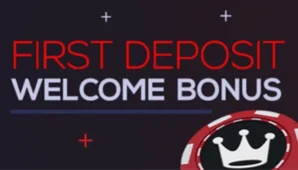
In this situation, getting all in with even kings and playing a giant pot is really not that appealing. You’re going to be playing a strategy where, sure, you’re check-raising for value and you have some bluffs, such as this hand. It’s actually a pretty good hand to check-raise bluff here. We’ve got some backdoors, the ace of hearts blocker, but most importantly, we want to use a small size because we’re not trying to play this 80 big blind pot, which by the way would be more than half the chips in play. Remember, there are only 150 big blinds across the whole table.
NP: What we’re saying is basically Mike has a great bluff candidate and he can use it. You’re allowed to bluff, you’re allowed to have some thin value betting, but we want Mike to raise to something like 450-500K, which might sound surprising to many players watching this. That’s why we’re making this video and why we have a ton of videos like this in the masterclass. Don’t be the guy who just checks calls all his value hands and never bluffs against a chip leader—that’s not great.

Victor calls and Mike gets a double gutshot on the turn.
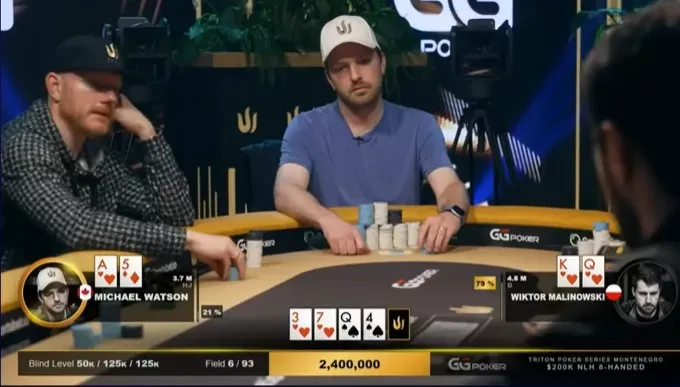
Now Mike turns a very appealing card, which makes this hand even more difficult. If he had anything eight or higher, he’s probably done. But now he’s in a situation where there’s 2.4 million in the middle and he has 3.7 million behind. We can see why it might have been more appealing to have that smaller check-raise on the flop, which would have given a higher SPR.
From experience in many spots like this, when we want to bluff here, we’re just trying to get the chip leader to fold some of his widest plays—like king of hearts and a jack or maybe pocket eights or nines that we can make fold if we bet something like 33% pot.
We’re not trying to go big, check-raise, and hammer the turn because our value threshold for that line has to be incredibly high. The other guy is bluff-catching with his whole range and just doesn’t call us like he normally would. Here, credit to Mike, he’s got some heart with this play.

But we’ve put ourselves in a situation where everyone around the table has short stacks—six, seven, or ten big blinds—and they’re just happy to go all in for free. So somebody’s winning money off this play, and it’s not Mike.
DD: Look at this spot for chips: a double flush draw board. What do I want to do here? Go geometric with a polarized range or even frontload geometric on a board like this? But under ICM pressure, this 1.6 million chip bet is actually more like 2.4 million in risk because the chips you’re putting in and potentially losing are worth a lot more than the chips you gain if things go well.
I really like Mike’s line here; I just wish he had gone to 500K on the flop instead of making it quite large. Then, when he gets to the turn with a deeper SPR, he could still bet a smaller percentage of the pot because of the ICM pressure.
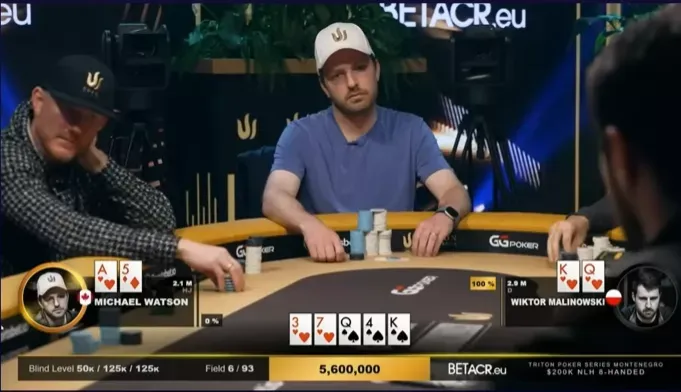
NP: On the river, we get the king of spades, and obviously Mike’s going to wave the white flag.
The big point of this hand is that he could have risked a lot less, potentially given up the turn a lot, maybe just used the ace of hearts and five of spades as his primary bluffs and been fine.
There are a lot of good ideas from him in terms of knowing that he needs to bluff versus wide ranges and that he’s allowed to bluff and have some thin value, but we missed the sizing, which ends up harming how much our stack is worth in the tournament with these short stacks around.
I would have liked to see him use smaller sizes and end the hand if he does give up after betting the turn, still staying in a firm third place with a much better chance to outlast those other guys. These spots come up all the time.
To recap, the key takeaway is that under ICM pressure, you want to polarize your strategy a bit but play smaller sizes than you would for chips alone. Avoid getting all in with marginal hands or bloated pots because the risk to your tournament life is too high. This approach adds complexity to your game, mixing bluffs and value bets in a way that protects your stack and maximizes your chances to go deep.
As we see here, Mike goes for a pure check, which is not surprising, and we don’t think he didn’t know that—it’s clear he nailed that one for sure. Victor follows up with a small size, which is also expected and straightforward.
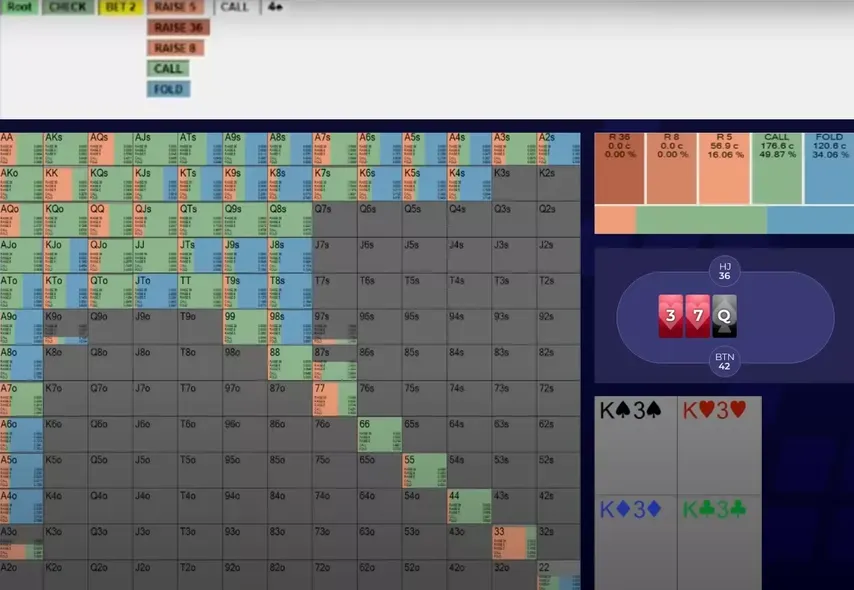
This is where the big decision comes into play. Mike has options to raise really tiny, something like five big blinds over Victor’s two big blinds, or go bigger, as he did with an eight big blind raise.
Okay, we’ve got our options of raising really tiny to five big blinds over two or raising to eight, which is what Mike did. Sorry Mike, not to shower you, but 0.00 is pretty strong evidence we don’t want it, right?
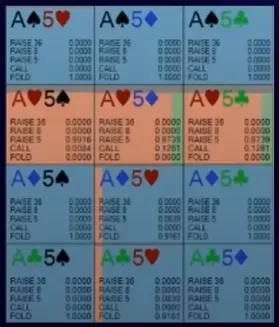
But we can see his hand is a great candidate to add those bluffs, and we can see we’ve got other stuff like some queen jack with a heart, some queen ten, little bit of king queen, some ace queen, right? So we still have that value, we still have different normal chipEV mechanics, right? Like we want to check raise the king six of hearts more than the king jack of hearts. We want to pure call the ace jack of hearts, that stuff, right? Like we’re doing normal chipEV stuff. We’re dialing that size back so that when we plan ahead for rivers, we’re not getting our stack in. That’s the whole thing, right?
DD: Yeah, nothing magic is happening here. You’re more aggressive with kings and aces. You’re still doing some mergy sort of stuff with some pocket pairs, with some queen ten. You’re very aggressive with sets. You have some polar check raises such as ace of hearts and five. You got some real draws. Just this frequency is a little bit lower, but most importantly the sizing—way less money going into the pot.
NP: So Wictor, again, when we think about turn play, part of it is that wide flat, wide stab when checked to, wide continue versus small size. So he’s going to have his backdoor stuff, he’s going to have some high card stuff like ace ten. We’re going to be able to target that on turn. So the turn, we get super passive. Mike again has a bluff candidate.
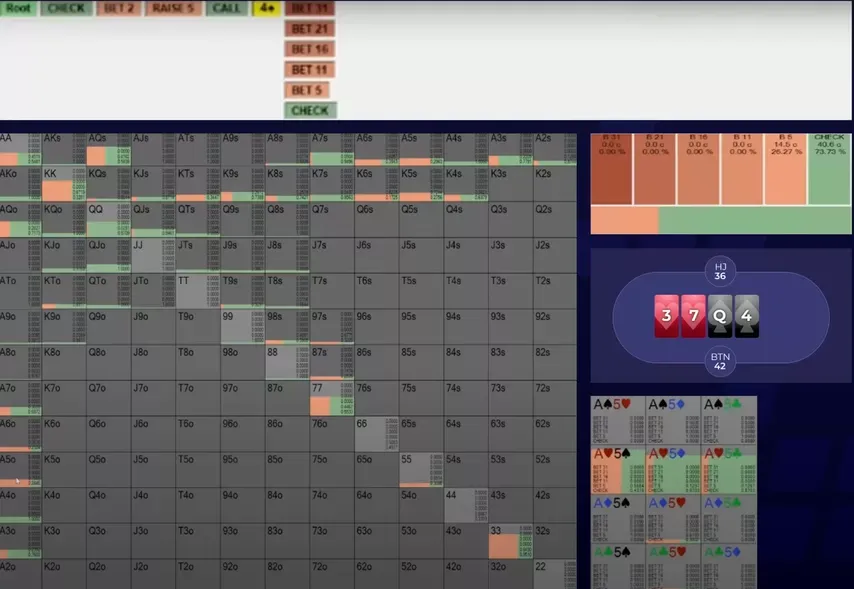
The point is, if we look at every turn card in the deck, this is never going to happen for chipEV, right? Where Mike’s entire betting volume, unless it’s a deuce, which would be the nutting card for all of his, a deuce or a three, other than those two cards his entire range goes into either check or B33, which you never see spots like this across the whole deck on a check raise line for chipEV, right?
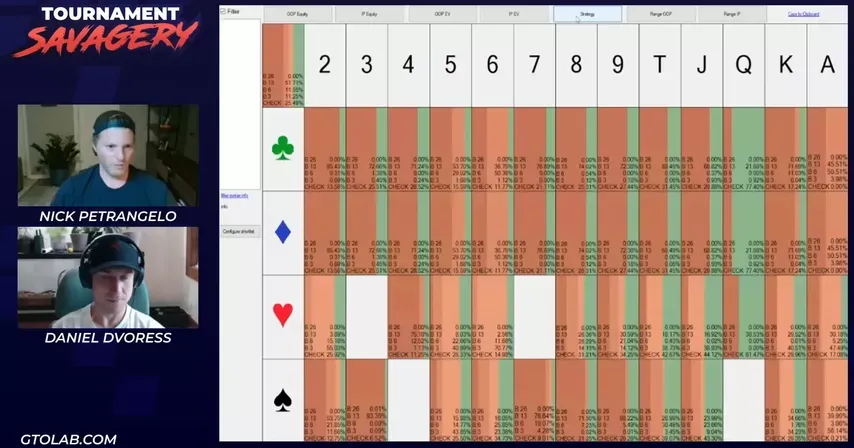
So this tells us it’s not trying to get the stack in. Our whole river, our whole turn is going into small bet or check pretty much. So yeah, when we see that big size, we don’t love it because it gets the pot too big out of position against that chip leader. And if we did go down the bluff line and we look at how rivers play again, we’re going to see when we’ve got SPR1 and we went check raise bet turn, we have another 0.00 all in.
We’re just trying to go check raise tiny, B33 turn, B50 river. We don’t need to get the stack in. We don’t need to build these ranges that get it all in. We love to kind of have that value and those bluffs but not risk our whole stack.
DD: You have to remember at the very start of the video, given the rough stack setup, there’s three guys that are under 10 big blinds. One way to conceptualize everything is if you leave yourself 10 big blinds or 15 big blinds, you are still going to be in fourth or rather in third in the tournament, right? There’s three guys that are going to be shorter than you. So there’s just such a premium on leaving yourself something back. And whether you have at the end of this hand 55% or 45% of the chips in play, that really doesn’t—the 55% of chips in play just really isn’t that much better than 45. But having zero chips in play and being out of the tournament is way worse than still being in third place.
NP: Yep, there is some honor in leaving a stack out there on the altar, sacrificing it to the poker gods once in a while.
But at a final table when there’s a couple seven big blind stacks and a 10 big blind stack and you started with 40 and you’re playing for $4 million, maybe it’s not time for that sacrifice, you know?
So thanks for watching, guys. There’s a lot more of this stuff in the course. So if you feel like you learned something for the post-flop ICM stuff here, then Tournament Savagery is definitely going to be a course for you because we’re talking about preflop to post-flop ICM stuff in a ton of that course. And there’s a lot of stuff like this where I find it, even myself, I learned a bunch and it’s really helpful for my game.






